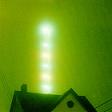|
NZAmoeba posted:Hi thread! I have some recessed ceiling lights that decided they didn't want to turn off any more. They're controlled by this awful dimmer switch which I realise now I really need to give a clean! I'm a lutron fanboy, my whole house are those dimmers. this is the version of that dimmer you need, it is forward/reverse phase selectable, most LEDs actually want reverse phase dimming, they just tolerate standard dimming because that's 90% of dimmers. If you have LEDs that buzz on a dimmer, in general, a reverse phase will solve that. https://www.prolighting.com/ma-pro-wh.html
|
|
|
|

|
| # ? May 25, 2024 10:20 |
|
I do have some lights that buzz, especially as they come on. But sixty five United States dollars for a single switch?
|
|
|
|
NZAmoeba posted:I do have some lights that buzz, especially as they come on. If thinking to yourself "jeez, that's annoying" is worth ten united states cents, then you'll have paid for that switch in mental anguish in under one of your common earth years.
|
|
|
|
NZAmoeba posted:I do have some lights that buzz, especially as they come on. They used to be $100 ? Reverse phase is still mostly a commercial and high end home LED fixtures thing so it commands the price it can. I needed my first one for some Philips cove fixtures and then swapped in another on some bathroom sconces that buzzed.
|
|
|
|
I have a couple basic contractor ceiling lights I want to replace. The old ones are probably like half a pound onboard LEDs and the new ones I want are probably 15-20 lbs. Not fans, just big glass lights. I understand according to the code, ceiling boxes should be able to hold 50-lb fixtures. However, my building is early 1930s and has probably never been touched by a licensed electrician since, so I donít want to trust it. Access from the floor above is out of the question. My understanding is this is the move, right? https://www.amazon.com/Westinghouse-Lighting-0110000-Saf-T-Brace-Ceiling/dp/B00027EWNW Is it actually this easy to install? https://www.youtube.com/watch?v=jEigUFxpaxI To figure out which way the joists run, do I just shove my arm up the hole and grope around? What roadblocks am I likely to run into? I know about the magic ceiling hole saw if necessary. And finally, is there anything about the age of my place likely to gently caress it up? Could the joists be too far apart or too close (none of the studs are on 16Ē, or regular at all, for example) or just uhh missing somehow? Is a 100-year-old plaster and lath ceiling not going to be able to take it? Is there a way I can test it without risking the light? Anne Whateley fucked around with this message at 02:44 on Apr 16, 2023 |
|
|
|
Anne Whateley posted:I have a couple basic contractor ceiling lights I want to replace. The old ones are probably like half a pound onboard LEDs and the new ones I want are probably 15-20 lbs. Not fans, just big glass lights. Can you link the fixtures you're trying to install? Odds are whatever you have will be fine unless it's a fan you're adding, which you claim not to be.
|
|
|
|
Anne Whateley posted:
The lathe will have to be cut too in order to make the hole big enough. I'm not sure how well the magic ceiling hole saw will work. It looks like at least one person describes using it to cut the lathe so it might work. If you're already planning to do it yourself, are you able to see what the existing situation for the fixture mounting is? That might help make it easier to figure out what kind of scope you're talking about.
|
|
|
|
Our neighbor had to call the fire department today because of smoke smoking out of the attic space. The fire crew cut a lot of drywall ceiling out to get access to the attic space and put out the fire before it got too far. The culprit was 150ft of extension cord strung through the attic from the front to the back of the house and poking out the eaves so the previous owner could have a power outlet on the back porch. Which is a no-no as weíve learned in this thread, but the proximal cause of the fire seems to have been the flippers that redid the house deciding to cut that extension cord end off at the eave and shove the wire back into the attic - without ever figuring out if the other end of the cord was still plugged in. So a year+ later after buying the house, the new owners suddenly smell smoke in the middle of the afternoon because that crudely clipped extension cord finally decided to short itself out and start a fire. Having briefly known the original owner, and then having watched the flippers take a bunch of cheap shortcuts during their reno, none of this was surprising in retrospect.
|
|
|
|
H110Hawk posted:Can you link the fixtures you're trying to install? Odds are whatever you have will be fine unless it's a fan you're adding, which you claim not to be. Danhenge posted:The lathe will have to be cut too in order to make the hole big enough. I'm not sure how well the magic ceiling hole saw will work. It looks like at least one person describes using it to cut the lathe so it might work. e: actually Iím not sure about the ceiling, but the wall lath is all metal, which would be fun to discover when trying to saw it. e2: were joists even wood in 1930s apartment buildings or was it all I-beams or something? gently caress probably wood given how badly my floor sagsÖ? yeah I guess I have to explore. Anne Whateley fucked around with this message at 05:28 on Apr 16, 2023 |
|
|
|
Anne Whateley posted:It’s not a fan, and no moving parts. It’s a good-sized (repro) Tiffany light with thick stained glass and metal, which gets you to 20 lbs. Also stupid expensive so I don’t want to stress-test it with the actual light. Take the old light off and take a picture. If it's a box screwed to a stud you're probably fine. Tiffany knock off chandelier or otherwise. If it's clipped to the plaster then yeah you're going to need something like those retrofit fan boxes. Won't know until you look. Also I still want to see it, Tiffany glass lamps are gorgeous.
|
|
|
|
I have an LED question actually: there are loads of self contained unit LED downlights in my ceiling and one of them has gone, I don't think the exact model is available anymore so do I need to match up to the existing ones in terms of power draw etc? They're also on a dimmer, just to make it more annoying. It also looks like when they extended the place they took the existing downlight units from the hallway and moved them so that there was a complete matched set throughout which is a level of thought not apparent anywhere else in the rest of the work that was done (example: built in shelves/cupboards that sealed in all the power/serial sockets such that they had to hack a massive chunk out to make actually wire the TV up, building said cupboards so that they actually cross sockets, half blocking them off).
|
|
|
|
Rat Poisson posted:The culprit was 150ft of extension cord strung through the attic from the front to the back of the house and poking out the eaves so the previous owner could have a power outlet on the back porch. Which is a no-no as weíve learned in this thread, but the proximal cause of the fire seems to have been the flippers that redid the house deciding to cut that extension cord end off at the eave and shove the wire back into the attic - without ever figuring out if the other end of the cord was still plugged in. So a year+ later after buying the house, the new owners suddenly smell smoke in the middle of the afternoon because that crudely clipped extension cord finally decided to short itself out and start a fire. Having briefly known the original owner, and then having watched the flippers take a bunch of cheap shortcuts during their reno, none of this was surprising in retrospect. This is a good example of why myself and others hard on thigs in this thread, especially when you get some goony goon saying "well, I didn't do it the way you said but it works so it must be fine!" Yeah, just because the light turns on/outlet is hot doesn't mean what you did is okay at all. It can and will come back to bite you in the rear end later. Powerful Two-Hander posted:I have an LED question actually: there are loads of self contained unit LED downlights in my ceiling and one of them has gone, I don't think the exact model is available anymore so do I need to match up to the existing ones in terms of power draw etc? They're also on a dimmer, just to make it more annoying. This depends on how OCD you are. A different LED fixture is likely to have a different dimming curve and even color temperature. And with ceiling cans you also need to be concerned with cutoff angles, etc. I'd be getting in touch with the manufacturer if at all possible to see what they have available now that will match the best.
|
|
|
|
Hello DIY, I'm here today to request your help. I'm going to attempt to install a new light on the back of my house. The light has this backplate you screw onto the house  When I mount this on the house is there anything I need to be aware of? Is it ok to just screw this on the siding? An added wrinkle is that the old backlight is electrical and the new one is solar. Here is the wiring harness of the old light.  What should I do with the old wiring as I don't need it anymore but also don't want it to catch on fire later.
|
|
|
|
The wire is improperly installed (no box) and should be traced to where it can be safely disconnected (like the switch that turns it on) and disconnected from there. Optimally it should be pulled back through the wall and removed. Minimally both the hot and neutral in your picture should be twisted together and wire nutted so that if anyone tries to energize this unsafe piece of wire they will find a dead short and a tripped breaker.
|
|
|
|
SalTheBard posted:What should I do with the old wiring as I don't need it anymore but also don't want it to catch on fire later. Set it on fire now.
|
|
|
|
I built a decent sized pergola on my patio, and I'm looking to get power to it. In the past, I had some twinkle lights and a fan, and I just ran an extension cord from an outside outlet to it. I'd like to do a little better. I'm thinking this:
Note I'm not talking about a double male connector, just having a built in extension cord, protected by pvc conduit with a little pigtail I can connect as needed. Something like this, and just make a little 5ft extension cord: https://www.amazon.com/EPLZON-Elect...al%2C91&sr=1-16 
Super-NintendoUser fucked around with this message at 00:39 on Apr 18, 2023 |
|
|
|
I feel like I've been scammed by the non-contact voltage tester industry YouTube is full of videos showing how easy it is to find a broken Xmas light in a string, just wave the magic wand and voila! Instead, the one I have tells me there's electricity everywhere, every wire leading to every bulb is triggering it, and yet the bulbs do not light. Well that's not entirely true. While they were up, they would work some days, and be dead on others. I figured weather conditions had something to do with it (they're outdoor lights). Any advice?
|
|
|
|
Super-NintendoUser posted:I built a decent sized pergola on my patio, and I'm looking to get power to it. In the past, I had some twinkle lights and a fan, and I just ran an extension cord from an outside outlet to it. I'd like to do a little better. I'm thinking this: Extension cords aren't allowed for permanent use. There's only one exception for this, and it's intended for indoor wall-mounted TVs. If you're going to the trouble of conduit, why not just wire it up permanently? If you already had an outdoor outlet on your house, they make Weather Resistant extension boxes. You could take out your existing outlet, put on one of those boxes, put the outlet back into it and you'd have a starting point for conduit out the side or bottom of that box.
|
|
|
|
Iím doing a partial kitchen remodel and we are moving a cabinet over 3 feet. It will be blocking a preexisting can light at that point. The can light is mounted in a 2ft high soffit that runs above all upper cabinets. The soffit is accessible from above, ie we have vaulted ceilings and if I get on a ladder in the kitchen I can see the top of the soffit and itís just a flat box. Question: if I block the can with the cabinet but then cut a hole in the top of the soffit above it so that the can junction box is accessible and I put one of those springy plastic access panels over the soffit hole I just made, would that be up to code? Removing the power/wiring for the can isnít an option since itís the first in the series and while I could do a new run from the switch to the next can in the series through the soffit Iíd really rather not since a)itís significantly more work and b) Iíll eventually add another can light where a built in fridge is sitting currently so Iíd be doing work Iím just going to partially undo at some point.
|
|
|
|
stupid puma posted:Iím doing a partial kitchen remodel and we are moving a cabinet over 3 feet. It will be blocking a preexisting can light at that point. The can light is mounted in a 2ft high soffit that runs above all upper cabinets. The soffit is accessible from above, ie we have vaulted ceilings and if I get on a ladder in the kitchen I can see the top of the soffit and itís just a flat box. What are you trying to accomplish here? Have you considered unscrewing the bulb?
|
|
|
kid sinister posted:Extension cords aren't allowed for permanent use. There's only one exception for this, and it's intended for indoor wall-mounted TVs. Could you expand on this a bit? Would a set of wall-mounted computer monitors fall under the exception? I've seen "kits" which pass power up from a wall-mounted male plug to a higher wall mounted female outlet and I was wondering how legit they are. They claim to be approved by various actual authorities (not just a self certification or such bullshit) but I was skeptical as the kits are effectively a within-wall extension cord.
|
|
|
|
|
Shifty Pony posted:Could you expand on this a bit? Would a set of wall-mounted computer monitors fall under the exception? Yes, those inlet kits are the exception. They ones that are actually correct are specifically made to not be an extension cord, i.e. they have the right kind of cable in the walls and are attached to one or both sides with appropriate fastening/clamping devices, not residential plugs. The ones I've used most recently are permanently attached to the outlet with bare/stripped wires on the inlet side. The inlet box that you install has what are basically clamp backstabs on it, like a good quality outlet. Both boxes clamp to the drywall as "old work" boxes, which is specifically allowed by code. So the in wall wiring part required no code changes. The big difference is that the little extension cord from your nearest outlet to that inlet box you installed it considered okay.
|
|
|
|
kid sinister posted:Extension cords aren't allowed for permanent use. There's only one exception for this, and it's intended for indoor wall-mounted TVs. Makes sense. I didn't want a conduit to be on the ground, but I can just pull up the pavers and run it in the ground for the three feet and then re-paver over it. I can then box up a disconnect switch as well so you can depower the pergola. I'll see what I can do.
|
|
|
|
Motronic posted:What are you trying to accomplish here? Have you considered unscrewing the bulb? I think they are concerned about the light being a defacto junction box that becomes inaccessible.
|
|
|
|
Guy Axlerod posted:I think they are concerned about the light being a defacto junction box that becomes inaccessible. If that's the case a cabinet that is not mounted wouldn't do this. Also, if it's an LED can it will come down and out with an accessible junction box without having to cut the soffit. Or it's a regular can where you can take it apart through he hole without cutting into the soffit. And if it's to be removed entirely you put a tyco splice in place of that. Then patch the hole from the can. I can't conceive of a situation where you'd cut more holes in the soffit.
|
|
|
|
Not sure of this is the best thread to ask in. I've bought an outdoors mosquito trap that has a small fan in which is meant to run continuously. I have an existing outdoor plug socket, but it's badly placed for where I want the trap to be - I'd have to run a 10m or so cable through my garden, which seems like a lot of effort to bury and also potentially dangerous? Right next to my ideal spot for it is a shed with a south facing roof. Given that the trap only needs a few watts of energy it seems like a small solar panel with a mini battery (for overnight) could be a good solution, but I have no idea what the cheapest viable setup is. An additional problem is that the power connector for the fan is weird, so I suspect I'll need to plug into a standard french plug socket, therefore requiring something to convert the solar panel output to AC. Unless it's actually a standard one that I've just never seen before? Is a bit annoying as 12V DC seems to be a common output for cheap mini solar panels. Here's the current connector and transformer.   e: something like this looks like it would be ideal if I could sort out the connector situation. this looks perfect but is about twice what I'm willing to pay £350 distortion park fucked around with this message at 20:15 on Apr 19, 2023 |
|
|
|
distortion park posted:but I have no idea what the cheapest viable setup is. honestly its going to be to go from your socket and clip the cable run to your fence/wall or bury it in copex if there's no surface to fix to. Solar setups like this are cool but IMO way more time consuming and demanding to maintain for what you need than just running cable. You'd need to house your inverter and battery setup inside the shed and do cable runs for it through the wall/roof etc
|
|
|
|
distortion park posted:Right next to my ideal spot for it is a shed with a south facing roof. Given that the trap only needs a few watts of energy it seems like a small solar panel with a mini battery (for overnight) could be a good solution, but I have no idea what the cheapest viable setup is. Get the data panel for the actual unit you're trying to power and size your system based on that. Your power brick outputs 12VDC, so you can power your device with 12VDC. If nothing else, use a multimeter to measure its running current and then use that to size your solar system. That power brick is 12V@1000mA. So you need 24AH of battery and the ability to charge that battery every day. Definitely doable. If your device only consumes 100mA (likely), then you can get away with a 3AH battery and panel, which is "garden solar light 18650" territory.
|
|
|
|
distortion park posted:Not sure of this is the best thread to ask in. I've bought an outdoors mosquito trap that has a small fan in which is meant to run continuously. I have an existing outdoor plug socket, but it's badly placed for where I want the trap to be - I'd have to run a 10m or so cable through my garden, which seems like a lot of effort to bury and also potentially dangerous? Here's what the vendor has to say about it (from 2 yrs ago) quote:We have a battery cable that you can use to run a Mosquitaire off a 12v battery. We recommend at least a 12 amp hour battery which will run the trap for a day. You would need at least 2 batteries so one could charge while the other is in use. I donít know how far is ďfairly far from the houseĒ, but you could also string together a few 10 m extension cables at $13.95 each (they have water tight connections and attach to the power supply) to get your trap close to 100 ft away https://us-shop.biogents.com/collections/traps/products/dc-extension-cable-typ-ii-10-m-10049
|
|
|
|
Motronic posted:If that's the case a cabinet that is not mounted wouldn't do this. Yeah, as the other poster said, there will be a floor to soffit (approx 7ft) pantry cabinet that will go directly under the can. So maybe the first question would be if I just take the lightbulb out and do nothing else would placing that cabinet below the can and screwing it into the wall be considered concealing a junction? It sounds like youíre saying it would not be. If it would be then a tyco splice would be much easier than cutting into the soffit, but I thought that was generally frowned upon.
|
|
|
|
stupid puma posted:Yeah, as the other poster said, there will be a floor to soffit (approx 7ft) pantry cabinet that will go directly under the can. So maybe the first question would be if I just take the lightbulb out and do nothing else would placing that cabinet below the can and screwing it into the wall be considered concealing a junction? It sounds like youíre saying it would not be. If you screw the cabinet into the wall that's a junction that you've now buried. There is nothing wrong with a tyco splice. I'm not sure who you've talked to that frowns upon that. It's literally the code legal way to do this. Adding a plastic or otherwise access hatch to the soffit just to leave the can with no light bulb in it as a splice when it's inaccessible from the bottom is an interesting kind of theoretical code question to bring up in like a refresher class. But I don't see any way it's compliant by the letter, only by the spirit. Throw in the tyco splice and be by the letter.
|
|
|
|
Motronic posted:There is nothing wrong with a tyco splice. I'm not sure who you've talked to that frowns upon that. It's literally the code legal way to do this. At one point a few years ago I Googled them as a solution for another issue I was facing and ran into a bunch of forum posts by electricians saying they donít trust them. Kind of like plumbers and SharkBites. And you totally nailed it lol - the soffit hole hypothetical is probably just my brain overthinking and trying to beat the code on some technicality. If I told you I was a lawyer, would that be surprising? Lol
|
|
|
|
stupid puma posted:If I told you I was a lawyer, would that be surprising? Lol No. But also, sharkbites are.......not the same. What you're reading is probably correct about them. Super prone to install issues, tough to tell how long they will last, don't bury them in a wall. Mostly because the proven alternative is cheap and easy. Love me a sharkbite in an emergency and for a temporary fix. Great thing to use.
|
|
|
|
kecske posted:honestly its going to be to go from your socket and clip the cable run to your fence/wall or bury it in copex if there's no surface to fix to. Solar setups like this are cool but IMO way more time consuming and demanding to maintain for what you need than just running cable. You'd need to house your inverter and battery setup inside the shed and do cable runs for it through the wall/roof etc This is probably right, especially with the mini weatherproof extender someone else linked
|
|
|
|
This might be a tangent but the thread title made me laugh after watching Beef on Netflix
|
|
|
|
devicenull posted:Here's what the vendor has to say about it (from 2 yrs ago) this helped me find the correct alligator clips/power connector cable online - just ordered a solar panel and the various bits, think this is going to work great!
|
|
|
|
distortion park posted:this helped me find the correct alligator clips/power connector cable online - just ordered a solar panel and the various bits, think this is going to work great! Post updates if it works - I wanted to do this with solar but ended up with just an extension cable. I'd definitely be interested in seeing a working setup
|
|
|
|
devicenull posted:Post updates if it works - I wanted to do this with solar but ended up with just an extension cable. I'd definitely be interested in seeing a working setup Most of the parts have arrived, and I've put it all together on my terrace, works fine there! Still waiting for some extender cables before I could put it in its final location. Will take photos once it's all set up I was a bit worried because I had ordered a 23W panel to power a 5W fan 24/7. I had originally thought that since it's only required for the summer and autumn that I'd get a capacity factor of at least 20%, then realised that might not be the case over short time periods. In the end Amazon actually sent a 30W panel so hopefully I'll be fine. The battery I bought was 10Ah which might also be a bit small but bigger ones were a lot more expensive. From full capacity that's enough to run the fan for about 24h with zero input, but what happens if there's like a week of stormy weather in September? It's probably cheaper to get another panel than a bigger battery though. e: most annoying bit is that the battery and solar controller aren't waterproof, so they need to be inside something while everything else needs to be outside.
|
|
|
|
distortion park posted:Most of the parts have arrived, and I've put it all together on my terrace, works fine there! Still waiting for some extender cables before I could put it in its final location. Will take photos once it's all set up A "project box" is a good watertight enclosure, to keep costs down, any reusable food container will do for a little while. Drill holes, feed in wires, seal with hot glue. Drill a SMALL drain hole in the bottom corner somewhere so condensation can leak out. "A little while" can end up being, amm, four years based on a project I've got outside. Just keep it out of UV and the plastic lasts a long time.
|
|
|
|

|
| # ? May 25, 2024 10:20 |
|
distortion park posted:Most of the parts have arrived, and I've put it all together on my terrace, works fine there! Still waiting for some extender cables before I could put it in its final location. Will take photos once it's all set up lowtechmagazine famously did lots of tests running their small server on battery+solar, and they concluded that panel size increases quickly become irrelevant and battery size is much more important in rising the uptime.
|
|
|












 i like nice words
i like nice words
























